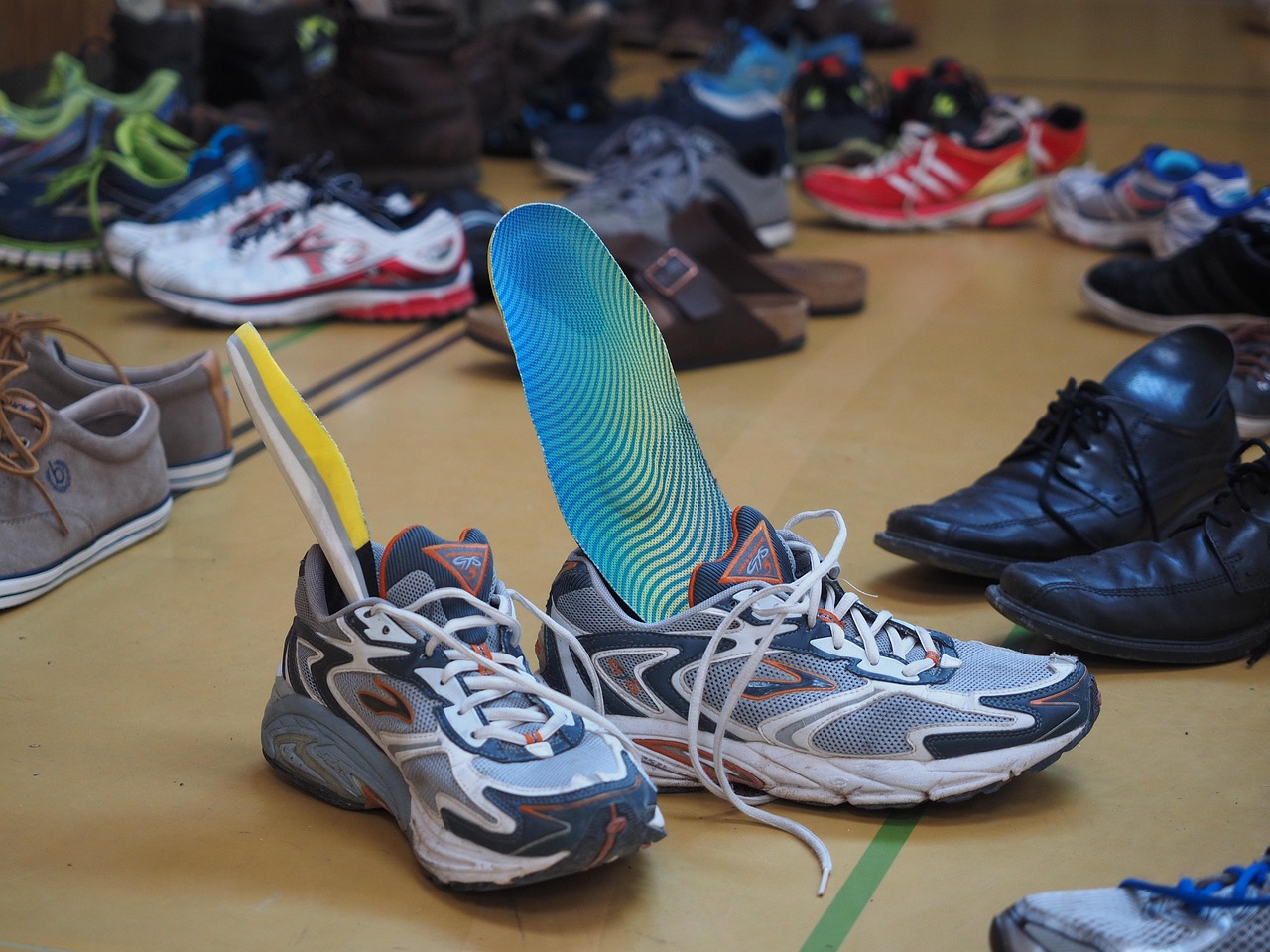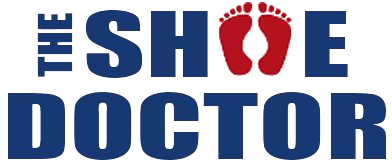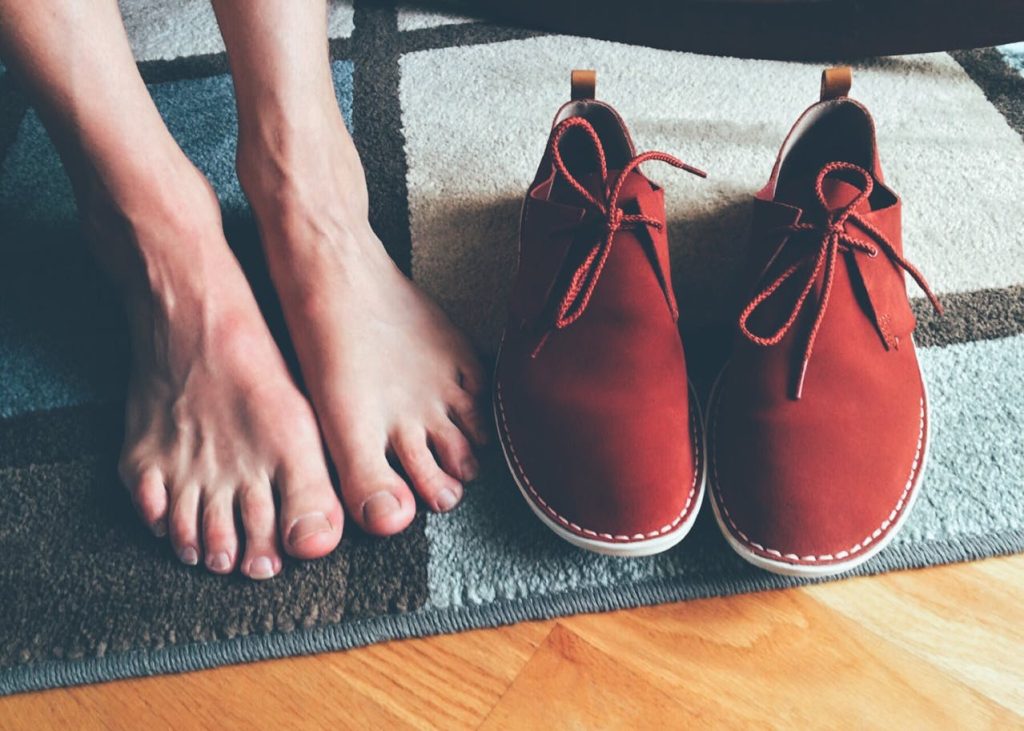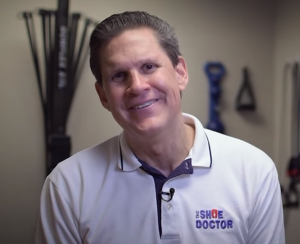Foot misalignment can cause back and knee pain by altering the way force distributes through the legs and spine. Minor distortions in foot shape or motion can frequently initiate a cascade of strain that migrates up the knees and back. Flat feet or high arches or uneven steps in the walk construct them and put more strain on joints and muscles. Most individuals experience lower back or knee pain after extended walking, sports or standing. Foot and ankle specialists typically rule out joint misalignment when individuals experience pain in these regions. Easy cures such as shoe inserts or foot exercises often do the trick. To learn more about how foot misalignment is connected to pain and what can help, read the body of this post.
Key Takeaways
- Foot misalignment can cause the whole kinetic chain to compensate, including shifting the knees, hips and spine which in turn can cause pain and cause joint dysfunction.
- Altered foot posture compromises efficient shock absorption and transfers excessive stress to the knees and back – which can lead to injury, if left uncorrected.
- Typical foot misalignments, including overpronation, supination, flat feet, and high arches, are associated with knee and back pain, emphasizing the importance of personalized evaluation and treatment.
- Both self-diagnosis and professional diagnosis — with the aid of specialized tools — are important in pinpointing foot misalignment and determining treatment.
- Control measures are corrective shoes, orthotics, exercises and/or lifestyle changes aimed at realigning the foot and easing pain.
- If left untreated, foot misalignment can result in chronic pain, decreased mobility, and even the development of joint conditions like arthritis.

The Kinetic Chain Connection
The kinetic chain connection dictates that we are all linked, so an adjustment in a single joint or segment can cascade through the entire system. It’s a fundamental concept in PT and bio-mechanics, and it’s relevant when examining feet-initiated back or knee pain.
- Foot misalignment, such as flat feet or high arches, can cause the body to compensate in its movement. Or the ankle may roll in or out more than needed. This can put additional strain on the knee, which strives to stabilize the leg.
- When the knees aren’t lining up as they should, the hips tend to twist or tilt in compensation. Over time, these changes can creep higher, inching up towards the spine, triggering a cascade of tiny adjustments that may suddenly result in pain.
- The feet are the foundation of the body. If this base is off, the body above has to make minor adjustments to stay upright. These fixes, or compensatory movements, might appear insignificant at first but can escalate into larger issues if not addressed.
- Little shifts in the feet can cause joint strain in the knees. As an example, excess foot pronation can cause the knee to rotate in, thereby straining muscles and ligaments. This can impact the hip and pelvis, altering how the spine aligns.
- Studies demonstrate that individuals with faulty foot alignment tend to exhibit altered lower-extremity biomechanics. These patterns can be associated with low back pain. Seniors, for instance, tend to lose some range of motion in the feet and ankles. This loss can alter their gait or posture, increasing their susceptibility for knee and back pain.
- Joint dysfunction in the feet, such as stiff big toe joints, may prevent the foot from moving properly. This makes the knees and hips compensate more, resulting in lower back or knee pain.
- Your kinetic chain is influenced by your strength and flexibility, as well as your balance. Weak muscles or poor balance can exacerbate compensatory movements, increasing the risk of pain or injury.
- Understanding the kinetic chain can assist with both identifying and resolving pain related to foot misalignment. It provides physicians and therapists a means to search for causes that may not be immediately obvious.
How Foot Misalignment Causes Pain
Foot misalignment silently alters the function of your entire body. Even a small shift in the foot’s angle or arch can initiate a chain reaction that extends all the way up to your knees and back. Our musculoskeletal system is connected from bottom to top. If your feet are misaligned, each step adds stress to joints up the chain. Even easy movements – walking downstairs – can deliver three to five times body weight in pressure through the feet and joints. If the misalignment remains uncorrected, pain and fatigue radiate throughout the legs, knees and lower back as well.
Altered Gait
When feet are misaligned, walking patterns shift to compensate. This typically causes weight to shift irregularly over the knees, hips, and back. Over the years, these little shifts accumulate, triggering that nagging knee or lower back chronic pain. The long-term knee pain, hip soreness, or back discomfort tends to emerge when your body attempts to compensate. Others observe that they go through shoes unevenly or experience soreness after extended walking. Just as misaligned feet can cause pain, correcting gait patterns — often with therapy or custom insoles — can help the body share weight more fairly, easing pain and preventing new problems.
Poor Shock Absorption
If feet fail to efficiently absorb the shocks, knees and spine get it. With every step, particularly when running, 2-3 times body weight can pummel through the joints. Bad shoes can exacerbate the problem, doing nothing to assist in dissipating these forces. When shoes are supportive and padded, they help absorb the impact, reducing joint strain. Superior shock absorption could equate to a world of difference in pain and injury avoidance as the years go by.
Pelvic Tilt
Feet out of line can cause the pelvis to tilt forward and to the side. This tilt shifts the spine out of its normal alignment and can lead to lower back pain. Other times, the knees begin to turn inward or outward, disrupting the alignment of the body. Indications are that you may have one hip sitting higher, a noticeable lean or ache on one side of the back. Correcting pelvic tilt, via stretching or exercises, can help realign the spine and knees into better shape and frequently relieve pain.
Leg Rotation
Foot misalignment can twist the legs, causing excessive internal or external rotation. This can stress the knees and ankles, leading to pain and even injury in the long run. When your muscles have to work harder to compensate for misalignment, they fatigue sooner. Physical therapy, stretching, and sometimes braces or orthotics can help set the legs straight, reduce pain, and prevent injuries from occurring.
Muscle Imbalance
Misaligned feet tend to overwork some muscles and allow others to weaken. Stiffness, soreness and fatigue in the legs and lower back are early indicators. Sometimes we even find ourselves aware that it’s more difficult to stand or walk for extended periods. Targeted exercise and stretching can even out muscle strength and flexibility. Maintaining muscle forces in balance is the secret to healthy joints and enduring comfort.
Common Foot Culprits
Foot malalignment is a primary cause of a lot of chronic back and knee pain. Treating these troubles typically begins by identifying the usual suspects – various feet and feets that lead to bad body mechanics. Things like hammertoes, bunions, ingrown toenails, leg length differences — they can all make you walk differently and put additional stress on your knees, hips and lower back. Even mild foot pain—like achiness at the end of a long day—can signal underlying issues with foot mechanics or alignment. To disregard these whispers is to put oneself at risk of prolonged suffering and diminished quality of life. Right shoes, early treatment, and individualized treatment plans are key to not only keeping you moving pain-free but preventing the pain from migrating to other joints.
Overpronation
Pronation is the inward roll of the foot while walking. This throws gender-disproportionate weight and flattens the foot’s arch beyond its normal range. This over-pronation breaks the natural alignment of the ankle and knee, pulling the leg out of its natural alignment. Common foot complaints might be aching knees, tired legs and occasionally lower back pain after walking or standing. Over time, these stresses can give rise to chronic joint pain and even to injuries. Treatment of overpronation includes supportive insoles, strength-building exercises, and wearing shoes with stiff arch support. Sometimes, physical therapy is needed. Fixing it can help get your body back in alignment and reduce pain, in turn making your day-to-day endeavors more manageable and pleasant.
Supination
Supination is when your foot rolls out instead of in. This places additional strain on the outer margin, causing unbalanced joint wear and tear and susceptibility to ankle sprains and knee injuries. Over months or years supination can lead to pain not only in the feet, but the knees and hips. To combat this, emphasize balance and flexibility exercises, and opt for shoes with plenty of padding and support. Orthotics can sometimes help spread the pressure. Good arch support is a must for those with high-supinated feet to avoid additional stress.
Flat Feet
Flat feet, characterized by minimal or absent arches, are a common source of foot misalignment. That usually translates into achy, tired and even stabbing feet, particularly after long days. Users might experience knee and back pain as flat feet produce atypical leg loading. So tailored orthotics and supportive shoes offer you relief by reintroducing proper foot mechanics. Occasionally PT is employed to fortify the muscles surrounding the foot and ankle. By improving foot alignment, these steps can help to ease symptoms in the knees and back, increasing mobility overall.
High Arches
|
Treatment Option |
Description |
|
Custom Orthotics |
Offers tailored support, improves stability |
|
Cushioned Footwear |
Reduces impact, absorbs shock |
|
Stretching Exercises |
Enhances flexibility, reduces stiffness |
|
Physical Therapy |
Targets muscle imbalances, improves gait |
Those with high arches frequently suffer from instability, foot fatigue and increased risk of ankle sprains. These symptoms can radiate up into the knees or lower back from bad shock absorption. Treating high arches is about mixing supportive shoes, custom orthotics, and exercises that encourage flexibility and balance. Once again, the right shoe is key to comfort and injury prevention — a shoe that’s stiff or does not offer support can exacerbate symptoms.
Identifying the Problem
Misaligned feet are an overlooked problem, yet their impact can radiate to places you never imagined. Bad alignment can put strain on your knees, hips, and lower back. These problems typically arise from minor structural issues — flat feet, joint damage, or plantar fasciitis/Achilles tendinitis. Even a small leg length discrepancy can alter the way your foot strikes the ground, redistributing pressure and leading to premature shoe wear on one side. These tweaks can add up—in the long term leading to aches and pains in your knees and back.
Self-Assessment
A self-assessment can help spot signs of foot misalignment before they lead to serious pain. Look at your shoes—if one is more worn on the sole or heel, it might mean one foot flattens or turns out more than the other. Stand in front of a mirror and see if your feet point straight ahead or if one turns outward. Try to balance on one foot at a time. If it feels harder on one side, that might be a clue. Check if the arches of your feet are even or if one is lower. Persistent pain in your feet, knees, or back that lasts more than a few days should not be ignored. Write down your findings so you can discuss them with a healthcare professional for a more targeted evaluation later.
Typical symptoms associated with such misalignment are arch-adjacent tenderness, swelling, or a sense of instability when standing or walking. Occasionally, you may observe your foot appears flatter or your ankle rolls inward. These are small modifications, but they can make a huge difference in your progress.
Professional Diagnosis
Professional diagnosis is key for anyone experiencing persistent pain or obvious foot alterations. Podiatrists employ a combination of clinical examinations and diagnostic methods to identify these alignment issues. They might examine your walk, flexibility, and strength. X-rays or scans can assist to eliminate other traumas and seek for structural issues.
|
Diagnostic Tool |
Description |
|
Physical Examination |
Assesses posture, gait, and foot structure |
|
Gait Analysis |
Observes walking patterns and weight distribution |
|
X-ray |
Detects bone or joint damage |
|
Foot Pressure Mapping |
Measures pressure points when standing/walking |
A comprehensive exam aids in identifying the source, be it flat feet, joint deterioration, or otherwise. Treatment can be anything from inexpensive shoe inserts to physical therapy or, infrequently, surgery. If the pain radiates to your knees or back, your doctor might test your spine to ensure the pain isn’t originating elsewhere.

Pathways to Relief
Pain from foot misalignment cannot be dealt with lightly — it requires a strategic, multi-level attack. Getting to the root of the problem is essential — feet alignment influences the function of your knees, hips and spine. Conservative treatments go first. A holistic plan — combining corrective footwear, orthotics, exercise and lifestyle change — affords the best opportunity for long-term relief and mobility.
Corrective Footwear
- Wide toe box for natural toe movement
- Firm heel counter for rearfoot control
- Arch support to decrease tension on the knee and hip
- Cushioned sole to absorb impact
- Slip-resistant outsole for stability
Good shoes can prevent additional joint damage by maintaining neutral alignment of the feet. Supportive footwear designed for flat feet or high arches can make a big difference in comfort and joint protection. Good fit is key—tight or loose shoes exacerbate pain. Some people prefer sandals or boots, but either way, support and comfort are the priority. Removable insoles mean added orthotic support when needed.
Custom Orthotics
Custom orthotics provide precision support for misaligned feet. By redistributing pressure, they relieve stress on the knees and spine — which can alleviate problems such as herniated discs from L4 to S1. Unlike over-the-counter insoles, these are custom made for each individual’s anatomy.
A podiatrist will examine walking and make a mold/scan of the foot. This makes sure the orthotic fits right and cushions those weak points. There are plenty of users who are relieved of radiating pain (think sciatica) after wearing custom orthotics, particularly during extended walks or standing.
Targeted Exercises
- Toe curls and marble pickups
- Calf stretches
- Ankle circles
- Short foot exercise
- Hip bridges
Flexibility exercises maintain healthy joints and decrease the possibility of pain. A routine that strengthens underused muscles and balances them out can help realign the lower leg. For instance, stretching tight calves and strengthening foot muscles reduces the strain that causes knee pain. If you practice these exercises daily, you can keep your pain at bay and give your mobility a boost.
Lifestyle Adjustments
Weight management reduces strain on your feet, knees and spine, which is especially important in those who are flat-footed or have misalignments. Staying active, with activities like brisk walking or swimming, keeps your joints healthy. Ergonomic adjustments—using footrests, maintaining proper posture, and avoiding prolonged sitting—soften the blow of sciatica and other nerve pain. Postural mindfulness, particularly while bending or lifting, fends off nerve flare-ups and encourages proper alignment.
The Unseen Long-Term Effects
Rotating through the body because of untreated foot misalignment, this ripple effect can have long-term impact beyond the feet. When foot posture is off, the alignment of your knees, hips, and spine can gradually become misaligned. This change frequently results in subtler imbalances that may not be immediately apparent but which can fester with age and usage. Spinal asymmetry is the culprit here. Published in Spine Journal in 2020, one researcher discovered that malalignment of the spine connects to higher risks of disc herniation and other chronic back issues. Over time, these modifications could make for a lifelong sore back and restrict your mobility.
Chronic pain from misalignment can insidiously whittle away at your motion and impact your activities. When back, knee or hip pain becomes commonplace, many begin to think of side stepping from activities. This causes less movement, weaker muscles, and even more instability. As an illustration, something like standing for a long time triggers pain or fatigue. It may lead you to sit more and move less, which exacerbates the issue. This cycle can damage both physical health and mental well-being, degrading quality of life.
Long-term joint wear is another genuine risk. This Malalignment Syndrome alters the functioning of your joints, creating additional stress on the knees and hips. Over years, this abnormal wear can lead to joint surfaces breaking down. For the knees, this typically manifests as pain, swelling, or even instability, and can increase the likelihood of knee arthritis. For the hips, muscle imbalances due to bad foot alignment can cause pain and reduced motion. These complications don’t only impact older adults, young people can experience the repercussions as well if the problem is dismissed.
Initial efforts to detect and correct foot misalignment are critical in preventing these long-term consequences. Easy things — like getting a professional check or wearing custom insoles — can help keep the body in better balance and reduce the likelihood of pain and cartilage wear.
Conclusion
Foot misalignment doesn’t just stop at the feet. It can trigger back and knee pain. Tight arches, flat feet, or a bad step can transfer stress up the entire body. A lot of people overlook the connection initially. Stabbing or aching pain could occur in the knees or lower back, as well, not just feet. Some simple checks and early care can break the chain. Custom insoles, some basic stretches, and smarter shoes make a huge difference. If you want to maintain a strong body, look at your feet. Listen to little pains before they become big. For all you with nagging pain, talk to a specialist. Tell us your story or questions below. Others might find your insight helpful as well.
Frequently Asked Questions
1. Can foot misalignment really cause back and knee pain?
Yes. They can alter your gait and your stance. This can put additional strain on your knees and back, causing pain there.
2. What are common signs of foot misalignment?
Typical indicators are persistent foot pain, irregular shoe wear, flat or high arch. You might experience pain in your knees, hips or lower back.
3. How does the kinetic chain relate to foot misalignment?
The kinetic chain is how your body’s joints and muscles cooperate. If your feet are out of alignment, it can throw off this chain, resulting in pain in your knees, hips and back.
4. Are there simple ways to check for foot misalignment at home?
Yes. Examine the shoes you wear for noticeable wear patterns, scrutinize your position while standing, or balance on one leg. If you feel wobbly or sore, foot misalignment may be lurking.
5. What are the most common causes of foot misalignment?
Typical culprits are hereditary, trauma, bad shoes, and medical conditions such as flat feet or cavus.
6. Can correcting foot misalignment relieve back and knee pain?
Yes. Treating foot misalignment with supportive footwear, orthotics or exercises can often alleviate back and knee pain.
7. Should I see a doctor for foot misalignment?
If you have chronic pain or limited ambulation, see a doc. They’ll be able to diagnose the issue and recommend good treatment options.
Struggling With Back or Knee Pain? Find Real Relief With Custom Orthotics From The Shoe Doctor
If everyday movements leave you dealing with nagging back pain or aching knees, your feet may be part of the problem. Misalignment in your foundation can place extra stress on joints and muscles higher up in your body. At The Shoe Doctor, our custom orthotics are designed to correct that imbalance, reduce pressure, and restore comfort so you can move freely again.
With over 20 years of experience, Russell uses advanced 3D foot-mapping technology to create orthotics tailored to your exact foot shape and movement. These orthotics do more than add cushioning—they improve alignment, support your stride, and help prevent pain from coming back. Through our partnership with the Spine & Injury Medical Center in San Jose, we also make sure your whole-body mechanics are addressed for lasting relief.
If you’re in the South Bay Area, schedule your free consultation today. Let The Shoe Doctor help you move pain-free and reclaim your day, starting from the ground up.
Disclaimer
The materials available on this website are for informational and entertainment purposes only and are not intended to provide medical advice. You should contact your doctor for advice concerning any particular issue or problem. You should not act or refrain from acting based on any content included in this site without seeking medical or other professional advice. The information presented on this website may not reflect the most current medical developments. No action should be taken in reliance on the information contained on this website, and we disclaim all liability for actions taken or not taken based on any or all of the contents of this site to the fullest extent permitted by law.


